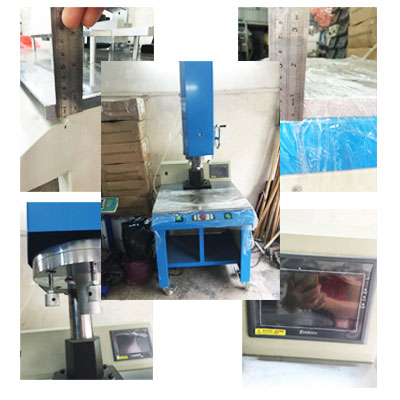
Today's Winghui Machinery Equipment Co., Ltd. should explain to you, what conditions should be considered in the design of ultrasonic molds? That's because the design of the ultrasonic mold is not as simple as its shape. On the contrary, it requires a lot of professional knowledge and skills. Therefore, engineers need to consider each link very well. The details are as follows:
1, the amplitude parameters of the mold:
The amplitude is a key parameter for the ultrasonic mold material to be welded, which is equivalent to the temperature of the ferrochrome. If the temperature is not reached, the welding will not be possible. If the temperature is too high, the raw material will be burnt or the structure will be destroyed and the strength will be deteriorated. Because the transducers selected by each company are different, the amplitude of the transducer output is different. After adapting the different ratios of the horn and the horn, the working amplitude of the horn can be corrected to meet the requirements. The output amplitude of the energy device is 10-20μm, and the working amplitude is generally about 30μm. The transformation ratio of the horn and the welding head is related to the shape of the horn and the welding head, the front-to-back area ratio and other factors, and the shape is exponential. Variable amplitude, functional amplitude, stepped amplitude, etc. have a great influence on the ratio, and the area ratio before and after is proportional to the total ratio. The company selects welding machines of different company brands. The simplest method is to make the proportion of the working welding heads to ensure the stability of the amplitude parameters.
2, mold frequency parameters:
Any company's ultrasonic welding machine has a center frequency, such as 20KHz, 40 KHz, etc. The working frequency of the welding machine is mainly the mechanical resonance frequency of the transducer, the horn, the horn and the horn. It is determined that the frequency of the generator is adjusted according to the mechanical resonance frequency to achieve uniformity, so that the horn operates in a resonant state, and each part is designed as a half-wavelength resonator. Both the generator and the mechanical resonant frequency have a resonant operating range. For example, the general setting is ±0.5KHz. In this range, the welding machine can basically work normally. When we make each welding head, the resonant frequency is adjusted. The resonance frequency and design frequency error is less than 0.1KHZ. For example, the 20KHz welding head, the frequency of our welding head will be controlled at 19.90-20.10KHz, and the error is 5‰.
3. Vibration node:
The welding head and the horn are designed as a half-wavelength resonator with an operating frequency. Under the working condition, the amplitude of the two end faces is the largest and the stress is the smallest, and the amplitude of the node corresponding to the intermediate position is zero and the stress is the largest. The position of the node is generally designed to be a fixed position, but the usual fixed position is designed to have a thickness greater than 3 mm, or the groove is fixed, so the fixed position does not necessarily have a zero amplitude, which causes some sound and part of the energy loss. The sound is usually isolated from other components by a rubber ring or shielded with a sound insulating material. Energy loss is considered when designing the amplitude parameters.
4, processing accuracy:
Because the ultrasonic welding head works under high frequency vibration, it should maintain a symmetrical design to avoid the unbalanced stress and lateral vibration caused by the asymmetry of sound wave transmission. The welding head we use for welding uses the longitudinal direction of ultrasonic vibration. Transmission, for the entire resonant system), unbalanced vibration can cause heat and breakage of the weld hair. Ultrasonic welding is applied to different industries and has different processing precision requirements. For particularly thin workpieces such as lithium ion battery pole pieces and tab welding, gold foil coating, etc., the processing precision is very high, all our processing equipment All CNC equipment (such as machining centers, etc.) are used to ensure that the precision of the machining meets the requirements.
5, mold life:
The service life of a welding head is determined by two aspects: first, material, second, and process.
Materials: Ultrasonic welding requires metal materials to have good flexibility (small mechanical loss during sonic transmission), so the most commonly used materials are aluminum alloys and titanium alloys. The material is one of the main reasons for ensuring the life of the ultrasonic mold in the welding product, and the process of completing the mold is complicated. Therefore, it is not only the design of the mold engineer that the material must be carefully selected, but also the material that the product requires to be used to avoid inadvertent influence on its timeliness and quality.
Dongguan Yihui Machinery Equipment Co., Ltd. has been engaged in the ultrasonic industry for many years and its performance is relatively stable and mature. The welding equipment mainly adopts mature technology such as Taiwan's self-excited oscillation circuit, and the output is strong and stable, the protection is perfect, and it is sturdy and durable. The core components such as transducers are imported from Japan and West Germany, with long service life and excellent performance. It is a good helper for your production! Welcome to inquire!

相关标签:
